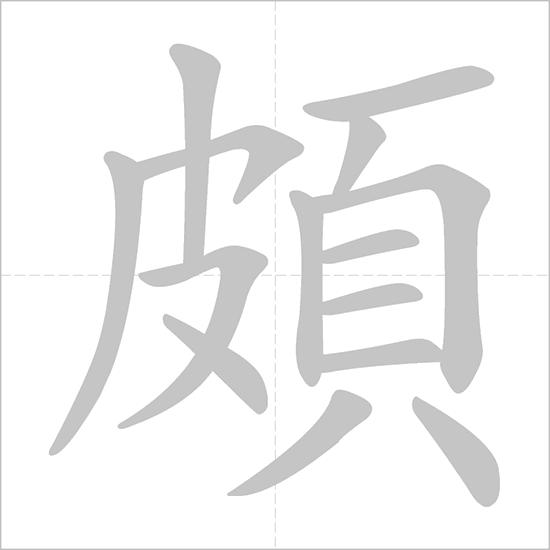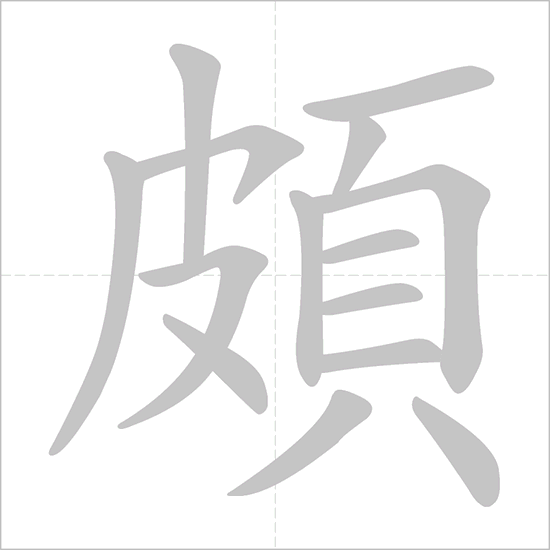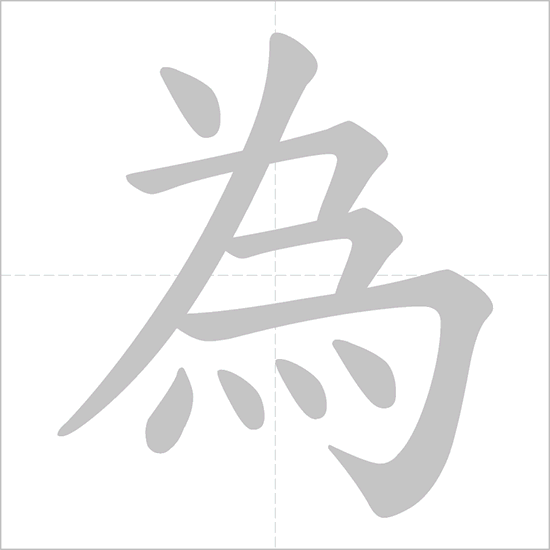Showing Results in:
- ENGLISH
- SEE TRADITIONAL
- SEE CANTONESE
-
Tone
Phonetics: Tone colors (āáǎàa):
Recent Searches:
Learn more about 頗為
- Written Chinese
- Dictionary
- "頗為" Character Details
| Pinyin | Yale | Jyutping | English Definition for Chinese Text |
|---|---|---|---|
| po1, po2 wai4, wai6 | po1, po2 wai4, wai6 | rather / quite |
| Traditional Chinese | Pinyin | Yale | Jyutping | English Definition for Chinese Text |
|---|---|---|---|---|
| po1, po2 | po1, po2 | rather / quite / considerably (taiwan pr. [po3]) / oblique / inclined / slanting / surname po | ||
| wai4, wai6 | wai4, wai6 | as (in the capacity of) / to take sth as / to act as / to serve as / to behave as / to become / to be / to do / by (in the passive voice) |
How do you remember 頗為 ?
Post your photos, example sentences and daily homework here to share with the Chinese learning community.
How to use 頗為 in a Sentence
Contact angles are of interest to ducks and swans.
The first words of the text filled us with misgiving.
- 阿 ā
- 特 tè
- 利 lì
- 聰 cōng
- 明 míng
- 過 guò
- 人 rén
- , ,
- 對 duì
- 局 jú
- 勢 shì
- 的 de
- 把 bǎ
- 握 wò
- 頗 pō
- 為 wéi
- 高 gāo
- 明 míng
- 。 。
Attlee was extremely intelligent and his grasp of the situation was masterly.
'Ay. Yes,'was the grim reply of Monsieur Defarge.
- 談 tán
- 到 dào
- 烹 pēng
- 飪 rèn
- , ,
- 法 fǎ
- 國 guó
- 人 rén
- 會 huì
- 頗 pō
- 為 wéi
- 得 dé
- 意 yì
- 並 bìng
- 且 qiě
- 極 jí
- 端 duān
- 排 pái
- 斥 chì
- 外 wài
- 國 guó
- 菜 cài
- 。 。
The French are proud and highly xenophobic when it comes to cooking.
- 教 jiào
- 區 qū
- 長 zhǎng
- 的 de
- 故 gù
- 居 jū
- 已 yǐ
- 被 bèi
- 精 jīng
- 心 xīn
- 修 xiū
- 復 fù
- , ,
- 裏 lǐ
- 面 miàn
- 的 de
- 陳 chén
- 設 shè
- 也 yě
- 頗 pō
- 為 wéi
- 雅 yǎ
- 緻 zhì
- 。 。
The rectory has been sensitively restored and tastefully furnished.
- “ “
- 我 wǒ
- 告 gào
- 訴 sù
- 過 guò
- 你 nǐ
- 普 pǔ
- 雷 léi
- 斯 sī
- 克 kè
- 毫 háo
- 不 bù
- 知 zhī
- 情 qíng
- 的 de
- , ,
- ” ”
- 肯 kěn
- 普 pǔ
- 頗 pō
- 為 wéi
- 不 bù
- 耐 nài
- 煩 fán
- 地 dì
- 說 shuō
- 道 dào
- 。 。
"I told you Preskel had no idea," remarked Kemp with some asperity.
- 其 qí
- 他 tā
- 藝 yì
- 術 shù
- 家 jiā
- 翻 fān
- 唱 chàng
- 他 tā
- 的 de
- 歌 gē
- 曲 qǔ
- , ,
- 一 yī
- 定 dìng
- 使 shǐ
- 他 tā
- 過 guò
- 上 shàng
- 了 le
- 收 shōu
- 入 rù
- 頗 pō
- 為 wéi
- 可 kě
- 觀 guān
- 的 de
- 生 shēng
- 活 huó
- 。 。
He must make a decent living from other artists covering his songs.
- Chinese Characters with 1 Stroke
- Chinese Characters with 2 Strokes
- Chinese Characters with 3 Strokes
- Chinese Characters with 4 Strokes
- Chinese Characters with 5 Strokes
- Chinese Characters with 6 Strokes
- Chinese Characters with 7 Strokes
- Chinese Characters with 8 Strokes
- Chinese Characters with 9 Strokes
- Chinese Characters with 10 Strokes
- Chinese Characters with 11 Strokes
- Chinese Characters with 12 Strokes
- Chinese Characters with 13 Strokes
- Chinese Characters with 14 Strokes
- Chinese Characters with 15 Strokes
- Chinese Characters with 16 Strokes
- Chinese Characters with 17 Strokes
- Chinese Characters with 18 Strokes
- Chinese Characters with 19 Strokes
- Chinese Characters with 20 Strokes
- Chinese Characters with 21 Strokes
- Chinese Characters with 22 Strokes
- Chinese Characters with 23 Strokes
- Chinese Characters with 24 Strokes
- Chinese Characters with 25 Strokes
- Chinese Characters with 26 Strokes
- Chinese Characters with 27 Strokes



